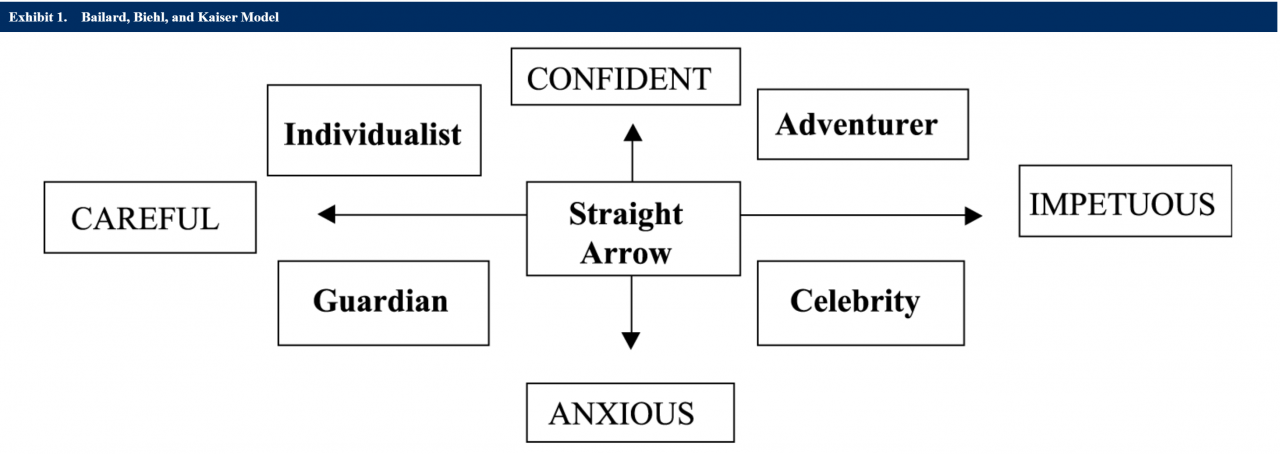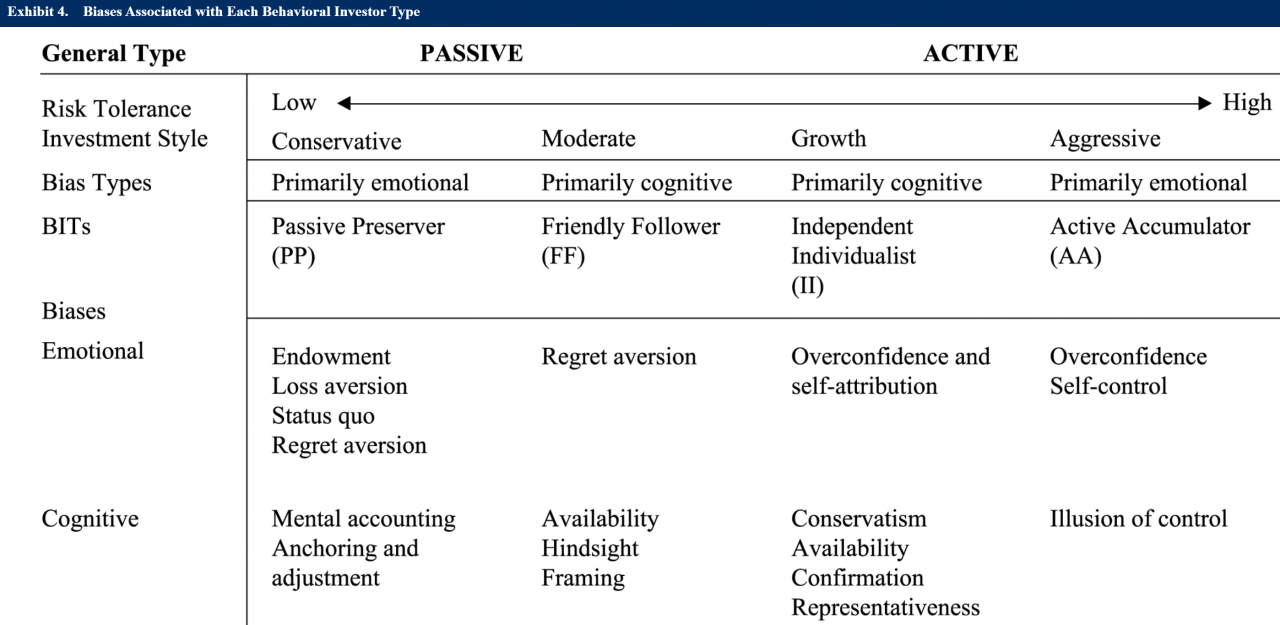In recent decades, financial service professionals and researchers have been attempting to classify investors by their psychographic characteristics—in other words, by personality, values, attitudes, and interests—rather than classifying simply based on demographic characteristics.
Psychographic classifications are particularly relevant with regard to individual strategy and risk tolerance. An investor’s background, past experiences, and attitudes can play a significant role in decisions made during the asset allocation process. If investors fitting specific psychographic profiles are more likely to exhibit specific investor biases, then practitioners can attempt to recognize the relevant behavioral tendencies before investment decisions are made.
It is important to note that because psychology is involved, no exact diagnosis can be made of any individual or situation. Although there are limitations to this type of analysis, if financial market participants can gain an understanding of their behavioral tendencies, the result is likely to be better investment outcomes.
Behavioral Models
The Barnewall two-way behavioral model was developed in 1987 and classifies investors into only two types: passive and active.
Passive investors are those who have not had to risk their own capital to gain wealth. As a result of accumulating wealth passively, they tend to be more risk averse and have a greater need for security than their “active” counterparts.
Active investors risk their own capital to gain wealth and usually take an active role in investing their own money. Active investors are much less risk averse than passive investors and are willing to give up security for control over their own wealth creation. When active investors perceive a loss of control, their risk tolerance declines dramatically.
The Bailard, Biehl, and Kaiser (BB&K) five-way model, classifies investors along two dimensions according to how they approach life in general.
The first dimension, confidence, identifies the level of confidence usually displayed when the individual makes decisions. Confidence level can range from confident to anxious.
The second dimension, method of action, measures the individual’s approach to decision making. Depending on whether the individual is methodical in making decisions or tends to be more spontaneous, method of action can range from careful to impetuous.
BB&K categorize investors into five behavioral types, which lie at different points in a grid formed by confidence/method of action. For example, the “straight arrow” investor would lie in the center of the grid, with the other four behavioral types scattered around the center.

Using the two dimensions like axes on a graph, the five behavioral types of the BB&K model are summarized in the following according to confidence and method of action, as indicated next in Classification of Investors According to the BB&K Behavioral Model.
- Adventurers may hold highly undiversified portfolios because they are confident and willing to take chances. Their confidence leads them to make their own decisions and makes them reluctant to take advice. This presents a challenge for an investment adviser.
- Celebrities like to be the center of attention. They may hold opinions about some things but to a certain extent recognize their limitations and may be willing to seek and take advice about investing.
- Individualists are independent and confident, which may be reflected in their choice of employment (Successful business owner which tends to be individualistic in approach). They like to make their own decisions but only after careful analysis. They are pleasant to advise because they will listen and process information rationally.
- Guardians are cautious and concerned about the future. As people age and approach retirement, they may become guardians. They are concerned about protecting their assets and may seek advice from those they perceive as being more knowledgeable than themselves.
- Straight arrows Straight arrows are sensible and secure. They fall near the center of the graph. They are willing to take on some risk in the expectation of earning a commensurate return.
Behavioral Investor Types (BITs)
Pompian (2008) identifies four behavioral investor types (BITs). The objective of this categorization scheme is to help advisers and investors better understand investor behavior in an effort to make better investment decisions.
Pompian introduces a behavioral alpha (BA) approach. It is a “top-down” approach to bias identification that may be simpler and more efficient than a bottom-up approach. The BA approach is essentially a shortcut that may more efficiently identify biases for the purpose of determining which type of bias dominates.


Most common emotional biases exhibited:
- Passive Preserver: Endowment, loss aversion, status quo, regret aversion.
- Friendly Follower: Regret aversion.
- Independent Individualist: Overconfidence, self-attribution.
- Active Accumulator: Overconfidence, self-control.
Most common cognitive biases exhibited:
- Passive Preserver: Mental accounting, anchoring and adjustment.
- Friendly Follower: Availability, hindsight, framing.
- Independent Individualist: Conservatism, availability, confirmation, representativeness.
- Active Accumulator: Illusion of control.
